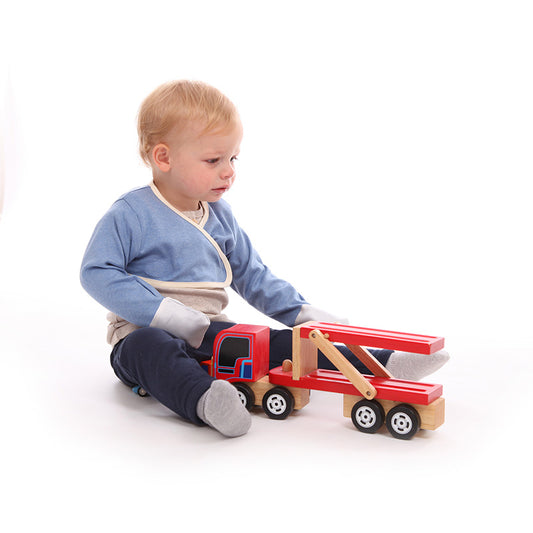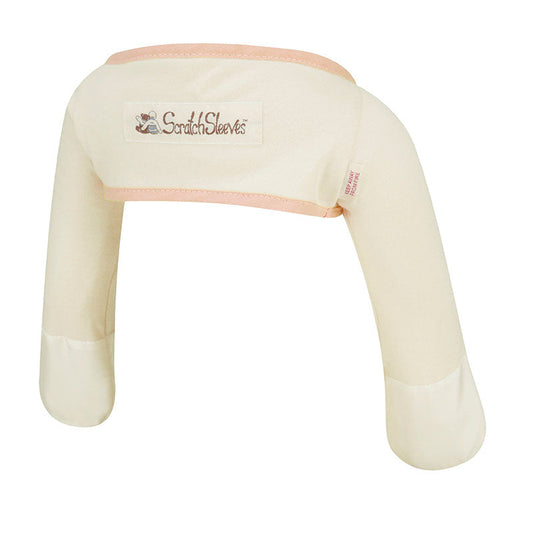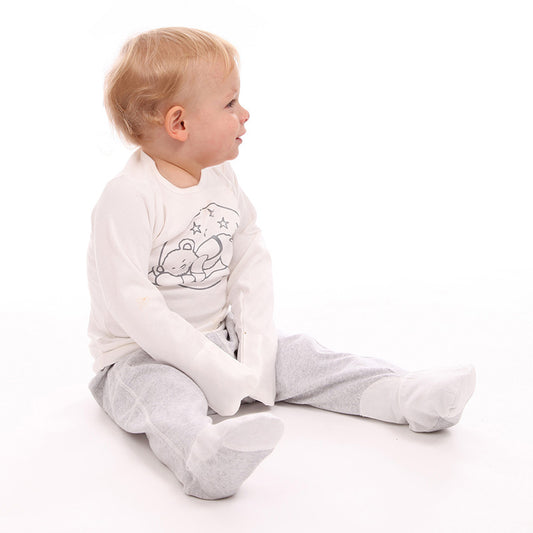Eczema in Children
Childhood eczema is unbearably itchy – so much so that it is often known as the ‘itch that rashes’ rather than the ‘rash that itches’. This incessant itching inevitably leads to scratching, which increases the chance of infection resulting in even more itching and scratching. ScratchSleeves help to break the itch-scratch cycle by minimising the damage caused by scratching.
After continuous sleepless nights due to my 3 year old daughter’s eczema, she is now managing a full night’s sleep without waking up in discomfort bleeding from scratching, since wearing ScratchSleeves (or her “pink princess gloves” as she calls them!). Thank you so much for creating such a helpful product, and for such excellent customer service and support. – Lesley L via email
About childhood eczema
In the majority of children with eczema, the rash appears before 2 years old, usually between 3 and 6 months. However, it can also appear later. The statistics show us that eczema typically is most active at around two years and flare-ups necessitating doctor visits tail off after that age1. For a long time the prevailing belief was that most children ‘grow out’ of eczema. More recent studies have shown it’s not quite so simple as that. What is clear is that the condition tends to come and go – often disappearing entirely during later childhood. It may return at times during adulthood often brought on by stress or aging, and for some, eczema will persist throughout their lives2.
As babies grow into children, the location and appearance of the eczema rash typically evolves. Eczema in children tends to settle into the folds of the skin: behind the knees, inside elbows, on the neck, hands, or around the eyes and ears. Darker skins can also be affected on the outer surfaces of knees and elbows.
As children grow, the rash typically becomes drier, with more flaking of the dry skin, and turns from red to brown-grey colour. In affected areas, your child’s skin inflammation can also become thickened and sensitive, especially if scratched regularly. These symptoms typically worsen and improve over time, with eczema flare-ups occurring periodically.

Managing childhood eczema
One of the biggest problems with managing childhood eczema is the intense urge to scratch at itchy skin, which may then bleed or become infected. These infections can further intensify the itching resulting in even more scratching. Continued scratching can also result in skin thickening, known as lichenification. This thickened skin loses flexibility and, as eczema tends to be worst around joints, painful cracks can develop as a result of natural movement.
Itching (and scratching) at night can also result in disturbed sleep, making children grumpy and irritable. They may also find it hard to concentrate and learn. Night-time waking from childhood eczema impacts both the child and their carers, making lack of sleep one of the main challenges in managing childhood eczema.
There are 3 key components to controlling childhood eczema:
- A consistent skincare routine which keeps the skin moist and supple with emollients. This will keep the skin as comfortable as possible. Flare-ups should be treated promptly with additional emollients and, where necessary, steroid creams.
- Minimise scratching. While this is easier said than done, minimising scratching will keep the skin as intact as possible, minimising the risk of infection.
- Identifying and avoiding flare-up triggers such as harsh detergents, pets, food allergies, heat, etc.
This means:
- Using moisturisers and emollients regularly and generously, not just during flare-ups.
- Tracking down your child’s eczema triggers and finding ways to avoid or minimise them while maintaining as normal as possible family life.
- Keeping skin clean and undamaged to avoid infections, using scratch mitts when necessary.
How to stop kids scratching their eczema
Apart from the immediate damage caused by scratching itchy eczema, scratching can also turn into a habit. To minimise the damage and stop this habit forming, you will need to give your child some effective strategies for dealing with the very real eczema itch. From experience, being told to ‘stop scratching’ without being told how to stop is incredibly frustrating. However, finding effective strategies to minimise scratching is an important life skill for an eczema sufferer.
Minimise the itch
The most effective way to stop young children scratching their eczema is by minimising the itching with a good skin maintenance routine and avoiding known triggers. Keeping rooms cool, dressing itchy kids in loose cotton clothing, and avoiding harsh soaps and detergents will also help.
Use a cold compress
A cold compress (or even a water bottle from the fridge) can often be effective at stopping the itch. We keep a novelty gel-filled compress in the fridge for the purpose (which comes in handy for bumps and bruises as well).
Tap don’t scratch
Teaching kids to lightly tap the skin near the itch with their fingers until the itch fades can also help. The vibration created by the tapping interferes with the nerve signals responsible for the itch. Older children may find it helpful to wear a hair elastic or elastic band on their wrist that they can twang against their skin to distract from the itch (make sure it’s not too tight).
Use distraction tactics
If the itch just won’t go away, distraction can be really effective – especially if it involves both hands. Watch your child and work out if there is a time when they are more likely to scratch. This will often be when they are tired, slightly bored or preoccupied watching the TV. Armed with this knowledge, you should be able to come up with a strategy to help them.
Fiddly toys like Lego, tangle toys, and even a Rubik cube are great for keeping hands busy. We found that character action figures are great at keeping our son’s hands out of mischief while he watches the TV. We also have some great games on our mobile phones to keep his scratchy fingers occupied when we are out and about.
Minimise the damage
If scratching is inevitable, you’ll need to keep finger nails clean and short. This will minimise the damage and risk of infection. It may also be necessary to cover the hands of young children who can’t stop themselves from scratching when their hands aren’t occupied or they are asleep. The unique double-layer mitts by ScratchSleeves minimise the damage caused by scratching, while the cool silk outer mitt is calming on the dry skin. The loose-fitting sleeve design ensures that the mitts not only stay but avoids any irritation of sore areas on hands and wrists that can occur when wearing other eczema gloves. See more on how ScratchSleeves work here.
Itch relief medication
Some eczema creams contain suppressing ingredients (usually lauromacrogols), which act as a topical anesthetic and calm the itching sensation. However, as these can usually only be used a limited number of times per day, we reverse these for bedtime use.
On really itchy days (or nights), children’s Piriton allergy medicine can be helpful for some children especially if they also suffer from airborne allergies like hayfever, but it will make them drowsy.
Reward effort
A lot of kids scratch without being aware of it. In these cases, sticker charts are a great way to help young children become aware of when they are scratching. It also gives you a chance to reward your child for the major, but largely hidden, the achievement of stopping themselves from scratching. Our free printable reward chart include some useful guidance and top tips for helping kids to break the scratching habit before it becomes ingrained.
Eczema and sleep
Children with eczema often find sleeping a problem as skin gets hotter and itchier at night. During the daytime, the body produces a natural anti-inflammatory called cortisol which reduces the itch sensation. Unfortunately, our cortisol levels drop during the night. This means that children with eczema are genuinely more itchy at night than they would be during the day, and with very little to distract them. Itchiness can make it hard for eczema kids to fall asleep, stay asleep or get back to sleep after waking up.
Numerous medical studies have concluded that children with eczema experience sleep disturbances and poor quality sleep3: ‘…eczema appeared to negatively affect sleep quality throughout childhood, even among patients with mild and inactive disease. Increasing disease severity and comorbid asthma or allergic rhinitis appeared to be associated with worse sleep-quality outcomes.’ Poor sleep quality can affect a child’s mood and concentration the following day, especially during flare-ups. It can also result in discipline and behaviour issues4.
A bad night’s sleep does not set children up well for dealing with an itchy day. Here are some things that help our scratchy son to sleep well and wake up bouncing:
- Applying moisturiser before bedtime stories to allow it time to soak in.
- Wearing loose-fitting, cotton nightwear – ScratchSleeves PJs are a good place to start.
- Keeping his bedroom cool and using a humidifier on nights when the central heating is on.
- Using light cotton and natural-fibre bedding.
- Keeping fluffy pets out of the bedroom, as they can make eczema worse.
- Keeping house dust mites to a minimum by airing bedding daily, dusting with a damp cloth, machine washing soft toys regularly and replacing his carpet with hard floors and machine washable rugs.
When your itchy little one wakes in the night, be kind but also quiet and efficient. While it’s important to meet your child’s needs, be careful not exceed them. Children will always push at boundaries and it is our job as adults to identify the genuine need as opposed to delaying tactics or attention seeking. Consistently exceeding your child’s genuine night-time needs can develop into long-term issues with sleeping that aren’t directly related to the eczema itch.
Childhood eczema’s effect on the whole family
It’s not just the child with eczema that can suffer mental health problems due to their condition either. Having a child with the condition can be stressful and upsetting, and can impact the wellbeing of the whole family. Unsurprisingly, research has found that childhood eczema also has a significant impact on the emotional and social well-being of parents and caregivers5.
Interrupted sleep is often the hardest thing for caregivers to deal with. Parents of pre-schoolers typically lose around around 2.6 hours of sleep per night when their child’s eczema is flaring6, making it difficult to function effectively the following day.
In summary
Childhood eczema severity tends to peak at around 2 years old. In 80% of cases, childhood eczema will disappear by the time children are 82. However, for some it will persist into later childhood and even adulthood for the unlucky few (around 5%).
The key thing to hold in mind is that while you won’t be able to eradicate eczema, it does get easier to deal with. Over time you’ll get to know more about your child’s triggers and which treatments and approaches work (or don’t work) for them. You should be able to reach a point where the condition lives in the background and does not get in the way of enjoying family life.
More information
- Our blog is based on our experience of bringing up two children with eczema. It also has been turned into a book
- In the USA: National Eczema Association is a great source of information as well as providing community support and raising awareness
- In Canada: the Eczema Society of Canada has range of online resources as well as directories of eczema specialists and products
- In Australia: Eczema Support Australia offers in-person and online support network for families of eczema children. It also has great online resources.
Our sources
- Lusignan, S et al. 2020. ‘The epidemiology of eczema in children and adults in England: A population‐based study using primary care data’. Clinical & Experimental Allergy. https://pubmed.ncbi.nlm.nih.gov/33179341/.
- Kim, JP et al. 2016. ‘Persistence of atopic dermatitis (AD): A systematic review and meta-analysis’. Journal of the American Academy of Dermatology, https://pubmed.ncbi.nlm.nih.gov/27544489/.
- Ramirez, FD et al. 2019. ‘Association of Atopic Dermatitis with Sleep Quality in Children.’ JAMA Pediatrics. https://pubmed.ncbi.nlm.nih.gov/30830151/.
- Dahl, RE. ‘Sleep Disturbances in Children with Atopic Dermatitis.’ Archives of Pediatrics & Adolescent Medicine. https://pubmed.ncbi.nlm.nih.gov/7633537/.
- Capozza, K et al. 2020. ‘Insights from Caregivers on the Impact of Pediatric Atopic Dermatitis on Families.’ Dermatitis. https://pubmed.ncbi.nlm.nih.gov/32091463/.
- Reid, P and Lewis-Jones, MS. ‘Sleep Difficulties and Their Management in Preschoolers with Atopic Eczema.’ Clinical & Experimental Dermatology. https://pubmed.ncbi.nlm.nih.gov/7671394/.
Quick Buy
-
Cross-over ScratchSleeves
Regular price From €17,95 EURRegular priceUnit price / per -
Flip-mitt bodysuits
Regular price From €19,95 EURRegular priceUnit price / per -
Original Cream
Regular price From €11,95 EURRegular priceUnit price / per -
Sleepy Bear PJ Sets
Regular price From €25,95 EURRegular priceUnit price / per








